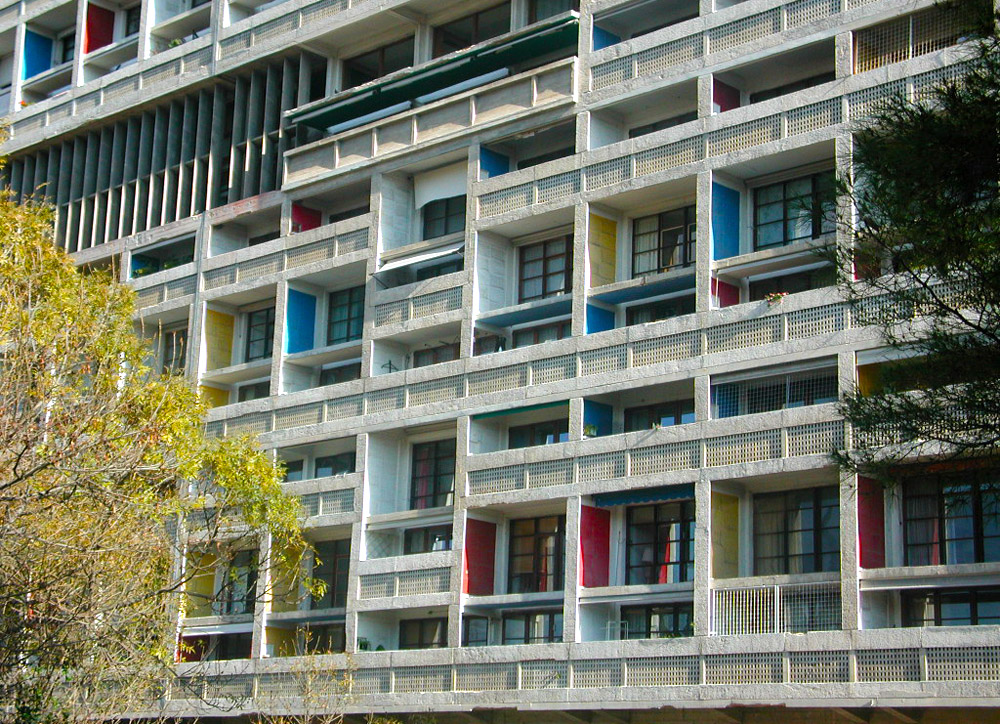How Ellsworth Kelly Was Inspired to Take His Art to the Walls
As art historian Michael Plante notes, Kelly’s work “absorbed many of the formal and intellectual issues that engaged the city’s geometric abstract artists during the immediate postwar years.” [i] However, Plante also links key aspects of his artistic development during this time to the renewed interest in mural painting that developed in France after the war. [ii]
This interest was the confluence of two elements of postwar life in France: the need to rebuild the many structures that had been damaged during the war; and the growing influence of the French Communist Party, which advocated for public art. Unlike the public art associated with communist politics in other countries, which was often dominated by social realism, in France, figures such as Fernand Léger were championing abstraction for public walls. [iii]
Since the early 1930s, Léger had spent significant periods of time in the United States, where he saw murals that were made as part of the Works Progress Administration Federal Art Project (1935-1943), including murals by José Clemente Orozco and Thomas Hart Benton at The New School for Social Research in New York. Having returned to France after the war, Léger was a prominent voice in a broader conversation among the French about what role mural painting ought to play in postwar art. It was a conversation that played out across publications, exhibitions, and commissions. Among these, an exhibition at Paris’s Musée National d’Art Moderne brought work by a number of Mexican muralists to France. Meanwhile, between 1948 and 1952, Henri Matisse was designing large-scale tile murals and other decorative elements for the Chapel of the Rosary of the Dominicans at Vence in the south of France, and the exhibition of his large-scale cutouts in Paris and across the country in the years after the war was an expression of painting on an architectural scale. [iv] And while there were those, such as Léger, who were invested in the evolution of murals in France as part of a broader political or artistic agenda, others’ enthusiasm centered on an appreciation of the art form in and of itself. The artist, critic, and De Stijl historian Michel Seuphor, who became a strong supporter of Kelly’s work, framed his interest in murals outside of politics: in a 1949 article for Art Aujourd’hui, Plante explains, he praised “the simple decoration of a wall.” [v]

Kelly’s exposure to murals during this time included such simply decorated walls, and the power of their decoration moved him. Having developed an interest in architecture that Plante traces to his exploration of 11th century Romanesque buildings while serving in France with the army, Kelly travelled to Marseilles to see Le Corbusier’s Unité d’Habitation during its construction. The architect’s use of bright pastels to articulate the walls dividing each apartment’s balcony inspired Kelly, who was grappling with the question of how to make art accessible to a wider audience. Writing to Hilla Rebay, then-director of New York’s Museum of Non-Objective Painting (now the Solomon R. Guggenheim Museum), the young artist stated his belief, “…that the days of the “easel” paintings are fading, and that the future art will be something more than just “personality paintings” for walls of apartments or museums. The future art must go to the wall itself….” [vi]
Kelly’s multi-panel, wall-mounted constructions were his response to these influences. While noting that Kelly denied that Matisse’s work had strongly influenced his own, [vii] Plante nevertheless argues that the ingenuity of Matisse’s modular cutouts, and his use of color “as a decorative and spatial element,” were significant references for the artist as he worked out solutions for his own aesthetic concerns. As an example, Plante points out that Red Yellow Blue White (1952) is an arrangement of multiple smaller canvases, which have not been painted, but were instead stretched with commercially-dyed fabrics. The historian connects this to Matisse’s use of colored paper for his cutouts. [viii]

Kelly also used colored paper, though for collages rather than cutouts. While the connection between these collages and his panel works is a subject of debate, Kelly described them as “ideas for things much larger—things to cover walls,” in a 1950 letter to the American composer John Cage. [ix] With space and his resources limited during his time in France, some collages were only translated into paintings years later, back in New York. [x]
Kelly’s work enjoyed strong support in Paris, being shown in two of Galerie Maeght’s annual Tendance exhibitions (where his friend and fellow student at the École des Beaux-Arts, Jack Youngerman, had also exhibited) [xi], and being discussed by critics such as Seuphor in terms of its mural-like qualities.
Upon his return to the United States, these ideas were neither immediately understood, nor embraced [xii]. Nevertheless, Plante notes, as part of a larger group of Americans returned from Paris, Kelly ultimately succeeded in “importing” some of the formalist concerns that had shaped his practice in Paris, shaping the evolution of abstraction in the United States in turn. [xiii].

